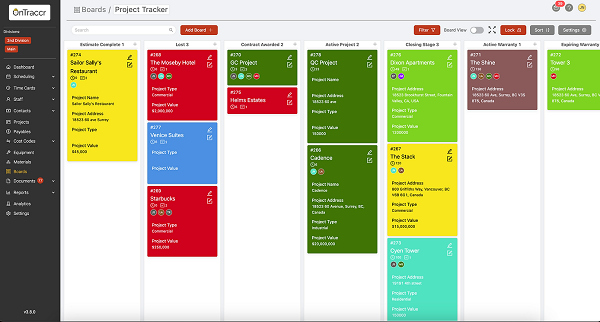 Monday, May 6, 2024
Monday, May 6, 2024  Monday, May 6, 2024
Monday, May 6, 2024 
In the construction industry, tracking and analyzing various metrics is essential for the success of any business. From project stages to financial performance, monitoring key metrics provides valuable insights for decision-making and overall business growth.
This article explores the importance of tracking metrics in construction businesses and how utilizing a software like OnTraccr, a comprehensive construction workflow software, offers specific ‘smart’ tracking board features to streamline this process.
Tracking metrics is crucial for construction businesses to understand their performance, identify areas for improvement, and make informed decisions. By monitoring various aspects of their operations, contractors can:
1. Measure Project Efficiency: Tracking project flow from stages like Awaiting Bid, Estimating, Estimate Complete, Lost, Won, Active Project, Warranty, and Expired Warranty allows contractors to analyze their project pipeline, identify bottlenecks, and improve overall project efficiency.
2. Assess Financial Performance: Monitoring financial metrics such as revenue, costs, profit margins, and cash flow provides a clear picture of the company’s financial health. This information enables contractors to make informed financial decisions, control costs, and ensure profitability.
3. Evaluate Client Relationships: With a CRM-like feature, contractors can effectively manage client relationships throughout the project lifecycle. By tracking client interactions, communication history, and client satisfaction metrics, businesses can identify areas for improvement, nurture client relationships, and enhance customer retention.
4. Optimize Resource Allocation: Tracking resource utilization, labor productivity, and equipment efficiency helps contractors identify areas of resource optimization. This enables them to allocate resources effectively, reduce waste, and enhance productivity.
Keep reading this blog on Ontraccr.com